Culture and the Sexual Marketplace: Harmful Cultural Trends and the Law of Supply and Demand in Sex and Romance
Many are incredulous of or resistant to this assertion, but it is readily demonstrated by imagining a microcosm of the sexual marketplace in a self-contained high school or—even better—a small college in a small, isolated college town. Suppose, for these purposes (although in fact there are typically many more women in college than men), that a self-contained, homogenous student body consists of an equal number of men and women of 2500 each, for a combined total of 5000 young men and women. In a default scenario that better reflects conditions in a healthy society, the women are not subject to any number of vices, delusions, or pernicious social manias that ruin them as suitable dating or romantic prospects in this sexual marketplace. In that scenario, their male counterparts enjoy a dating and sexual marketplace that is one for one. Time and effort will be expended in any number of ways to find a sweetheart, but the supply and demand is balanced.
In the alternative scenario—a scenario that reflects the dystopic nightmare that is modern society as it currently exists—the female population is subject to any number of undesirable, destructive, or even insane manias, fads, and social contagions that contaminate and constrict the female dating pool in significant ways. These can range from radical feminism, to hyper-promiscuity that has not only given rise to the “slut generation,” a turn of phrase that had some currency briefly twenty years ago. In fact, the evisceration of sexual mores over the decades has created a succession of generations of such women, going back to the boomers fucking in the mud at Woodstock, smoking pot and dropping acid, before promptly selling out in the 80s before consuming everything and leaving nothing for successive generations.
Hardly limited to these destructive sociological and cultural trends associated with the so-called sexual revolution, the contamination and ruination of young womanhood similarly extends to other phenomena, most notably the transgender menace, which, as Abigail Shrier explicates in Irreversible Damage, has been particularly captivating to a certain subset of young women in the United States, particularly those coming from affluent, liberal White and “fellow White”—that is, Jewish—families predominantly found in urban centers in coastal states. When the female population succumbs to these and other nefarious influences, the hypothetical dating pool drops from 2500 to some number much lower than that. If one were to analogize a scenario where each woman holds a chair and each man must find a woman to allow him to sit down in a variation of sorts of musical chairs, such harmful influences reduce the pool of available chairs by substantial numbers, 2000, 1500, 1250 or lower—more than making up for the female majorities in college. A three-to-two or even two-to one ratio will require men to expend much greater time, effort, and resources in order to find his female counterpart.
This destructive phenomenon is exhibited in a number of harmful, disconcerting trends that pervade the modern world. Before those trends are examined, limitations on perceived notions about individual choice and autonomy, so prevalent in the Anglo-American world, must be established. As set forth in “Thrust Into It All; The Individual Defined by Culture and Circumstance,” what is perceived as individual choice is profoundly determined by a myriad of cultural externalities in ways that even those aware of what Martin Heidegger coined as Geworfenheit[1]can only have a rudimentary, imperfect grasp of. The mother tongue one is born into, any number customs or manners regarding dress and fashion, music taste, and a seemingly unending litany of things associated with both the individual and his contemporaries are predetermined by the time and place one is born into. Women are even more subject to these external influences of the cultural milieu that envelops everyone.
Contrary to the sort of “universally rational actor” imagined in platitudes celebrating the so-called Marketplace of Ideas, people often do not act in rational ways. This is evidenced most immediately by the transgender menace. The population at large is greatly impacted by advertising campaigns that often involve expenditures in the hundreds of millions or even billions of dollars. Those who simplistically object that such matters ultimately come down to “individual choice” never discern that powerful but subversive interests wielding unimaginable wealth would never invest hundreds of millions or even billions of dollars in advertising campaigns if those advertising campaigns were not incredibly effective in peddling harmful or undesirable products and vices, from junk food, to sports gambling, to so many other harmful products and services sold in the name of abject greed, irrespective of the harm to the social fabric and greater good. This is precisely why regulatory bodies and governments have banned or significantly curtailed advertising for cigarettes and other tobacco products: advertising peddling these carcinogenic products worked, and worked quite well.

This very bad life choice is only a choice to a very limited extent, as individuals are propelled to such choices by a confluence of external factors, most notably cultural milieu, as well as groupthink, social contagion, peer pressure, and so on.
Similarly, irrational and even destructive behaviors can rub off on people in truly shocking and irrational ways. This is the social contagion theory—or, rather social contagion fact—that Shrier and others correctly attribute to the transgender menace that has infected a sizeable contingent of young people and even older adults as well, as it has been documented in bulimia spreading among patients interned at a hospital or institution, requiring bulimic patients to be segregated. As set forth in “When So Many Do Jump Off a Bridge,” the phenomenon of social contagion is so powerful that it can even “override the most deep-seated survival instincts” against “suicide ideation let alone carrying out thoughts of suicide to completion. . ..” Indeed, media coverage of instances of suicide is directly correlated with higher rates of suicide. After Marylin Monroe committed suicide, suicides jumped twelve percent.” It is for this reason that media conglomerates have protocols in place to report on newsworthy incidents of suicide in ways that are less likely to induce others to follow suit, including “industry standards that seek to minimize the risk of increased suicide resulting from suicide coverage in the news and other media.” Such standards have even “been promulgated by government agencies like the Center for Disease Control and mass media institutions themselves.” These policy standards include:
· placing an emphasis on how the suicide harms relatives and the greater community;
· always placing suicide helplines and other resources conspicuously in the coverage, whether print or multi-media;
· deliberately refraining from romanticizing or otherwise condoning or explaining the suicide;
· refrain from repetitive, ongoing, or excessive reporting of suicide in the news.
These preambles showing how limited and chimeric individual choice really is are essential for understanding the full import of a number of destructive and harmful cultural trends—trends that are particularly applicable to young women in the sexual and dating marketplace. One such trend that is particularly timely concerns polling data among White men and women, single and married:
Liberal identity has increased by eight to nine points among White women as well as women of color between the Obama and Trump/Biden eras, while it has decreased slightly among both groups of young men.
White married women lean conservative, although that is by the slimmest of margins. Unmarried White men without a college education pull the most to the right, college educated White men somewhat less so. Single, college educated White women pull strongly to the left, however, as evidenced for example in new polling data showing White college educated women are the only remaining contingent of Whites that supports continuation of so-called “diversity, equity, and inclusion” initiatives, as they are the one White demographic that strongly opposes the second Trump administration. This trend has been going on for some time, as seen in how visible White women were in the Black Lives Matter protests and riots in 2020. Indeed, a phenomenon known as “woke-fishing” has gained some notoriety in the past few years, in which single men pay lip service to leftist talking points and platitudes in order to seduce women beholden to leftist delusions. That White women are enamored with leftist claptrap in such large numbers is the most immediate illustration of how these appalling societal trends have a drastic impact on the sexual marketplace. At best such disagreements will hinder the establishment of romantic and sexual relationships, at worst these political and ideological differences will preclude any possibility of such relationships developing between White men inclined to more sensible political and policy positions (a majority of single White men) and women who have succumbed to left-wing groupthink.
An infamous case-study of this is one Chanty Binx, who gained world-wide infamy from her unhinged, misandrist outbursts as “Big Red.” Some readers will object that this woman is not (or was not) attractive. A reasonable position at the time of her infamous tirade, but she actually has nice facial features and was, once upon a time, fairly attractive.


In a lesser-known video in which she has an altercation with a Black preacher named David Lynn at a “pride” parade in Toronto, she is seen younger, trimmer, wearing more becoming and also more revealing clothes. One must of course object to the badge or sticker that reads “slut,” and the caption on her hot-pink tank top that reads “I Don’t Fuck Republicans.”
Several important observations are to be made. First, as far as anyone knows, she never married. But going beyond that, attire that reads “I Don’t Fuck Republicans” is hardly original or unique, as such attire is widely available across a wide array of ecommerce venues and brick and mortar novelty shops in so-called “blue” cities. This is just yet another demonstration of how what is perceived as individual choice is hardly that at all, but rather a set of sociological and cultural phenomena that can be observed on a macro, societal scale. Alas, there are millions of young women just like Chanty, or for that matter Leonie Plaar, better known as Frau Löwenherz.
A similar principal applies to popularity of bad music, something White women are so susceptible to, it has been the subject of various memes on the Internet. Some may scoff at this assertion as trivial or inconsequential, but having similar or disparate tastes in music is often a key factor in the success or failure of a relationship, or whether a relationship is formed at all. A young man who does not like Katy Perry or Taylor Swift or, as has been prevalent now for over 35 years, rap music is to be applauded, but particularly if he insists on finding a companion who does not have such terrible taste in music, he will likely experience greater difficulty in finding a suitable woman who shares more respectable taste in music. The vast majority of popular music favored by White women is awful just in terms of its musical qualities or lack thereof, but so much of this dreck conveys a degeneration of morals and decency as well, from Katy Perry’s T.G.I.F. which makes explicit reference to having a threesome (“We did a ménage à trois”), to an inexhaustible supply of other shit “musicians” hardly deserving of the moniker at all, such as “Cardi B” and “Megan Thee Stallion,” to the downright obscene rap lyrics that have enjoyed strong currency in youth culture for decades.
The transgender menace and the rise of LGBTQ-Yuck similarly apply to this supply and demand dynamic of the sexual marketplace. Some polling data indicates some 28 percent of generation “zoomer” women identify as some form of queer identity, usually lesbian or more likely bisexual because female sexuality, unlike its male counterpart, is far more malleable and prone to bisexuality and even switching from heterosexuality and bisexuality to lesbianism. Some data indicates as much as three percent of women in this generation succumbed to the mad delusion that is transgenderism. Three percent may not seem like a lot, but in the exercise described above of a pool of 2500 young women and 2500 young men, that would take some 75 women “off the market,” and ostensibly 75 young men missing female counterparts. This is compounded by female peers who have been inculcated with this insidious ideology and are trans allies, to say nothing of those who indulge the “gender non-binary” nonsense, so the deleterious effect of the transgender menace on the sexual marketplace is even higher. A far greater deduction from the dating pool is incurred by the increasing numbers of women who dabble in lesbianism and bisexuality as deviancy is defined ever further down.

A sordid collage of “before and after” comparisons posted by young women destroyed by the transgender menace. This is happening as a reproduceable, sociological phenomenon. Some might argue the two individuals on the right are unattractive, so who cares. Both individuals had nice facial features and would have been fairly attractive without the bad haircuts and other accoutrements. For every woman lost, there is a corresponding young man with one less potential prospect in the dating and romance game, i.e. the sexual marketplace. “But why do you care, how does it affect you, personally,” a legion of deranged lunatics and daft simpletons will invariably retort.
The last trend—a macro trend that has persisted with ever increasing strength since the end of World War II and really since the roaring 20s—relates to increasing prevalence and indeed ubiquity of promiscuity and even hyper promiscuity, attended by such pernicious phenomena as the normalization and mainstreaming of pornography, the rise of the cam girl menace, and more recent waves of feminism that attack any sexual standards at all as “slut-shaming.”
Hyper-promiscuity in women presents several problems. There is ample evidence linking high numbers of sexual partners (high body-count in Internet parlance) with chronic succession of dysfunctional and unsuccessful relationships, as promiscuity and especially promiscuity in women is also linked to unfaithfulness in marriage and divorce when they do get married. When large numbers of young women succumb to the “generation slut” ethos, their male counterparts can either compete with their peers for an ever-smaller pool of suitable, virtuous, but still attractive women not subject to such vices, decide that—in this age where love, beauty, and honor have all but died—the best recourse is to mitigate damages, sow wild oats of his own and seek sexual comfort where it avails him until he finds true love, if he ever does, or embrace celibacy for a prolonged, indefinite period of time while subject to intense sexual urges attendant by high testosterone experienced by healthy young men. Because of the ever-diminishing supply of suitable female companions, the least fortunate are nudged into involuntary celibacy.
Several considerations concerning the rising ubiquity of promiscuity and hyper promiscuity in young women warrant further elaboration. Two prior essays by this author concerning this matter have discussed at some length a disconcerting New York Times article entitled “The New Math on Campus” published in 2009, which describes and analyses the campus dating scene at the time. Of particular note is the account given by a sorority girl whose boyfriend fucked five or six or her sorority sister “friends” that “she knows of;” the term “friend” is somewhat loosely applied given that Greek life is a system whereby rich, affluent White kids pay others to be their friends and because of the “frenemy”[3] dynamic that has likely always characterized female friendship, but particularly so in regards to middle and upper middle class, largely suburban white women in the United States. This one anecdote, that can be replicated millions of times over, demonstrates a fundamental distinction between male and female sexual attraction, in that women are attracted to male promiscuity, partly because male promiscuity provides social proof, also known as preselection.[4] Women like this sorority girl do not view such caddish behavior as a red-flag portending future infidelity or any other number of problems; they see it as validation. “Other pretty girls had sex with him, so he is good enough for me” is the rationale of the estrogen-ridden mind of the sorority girl archetype.
With the rise of cuckoldry fetishism, polyamory, and other odious developments in culture and society that have eviscerated sexual norms and mores, there is some qualification or limitation to this distinction, but by and large most men would not find an otherwise highly desirable woman more desirable because she had sexual relations with five or six of a potential suitor’s friends. To be crude, right thinking men—right in more ways than one—would prefer not to kiss that mouth, or to “stick it or lick it,” sensibly eschewing any such offering of “sloppy seconds.” Men who have succumbed to a greater or even lesser extent to the erosion of sexual norms and mores at best regard a woman’s promiscuous behavior as neutral, not—in the absence of a cuckoldry or other harmful fetish or pathology—as a positive, except insofar as such indications of a woman’s loose morals may, depending on the circumstances, offer greater chances for an “easy lay.”
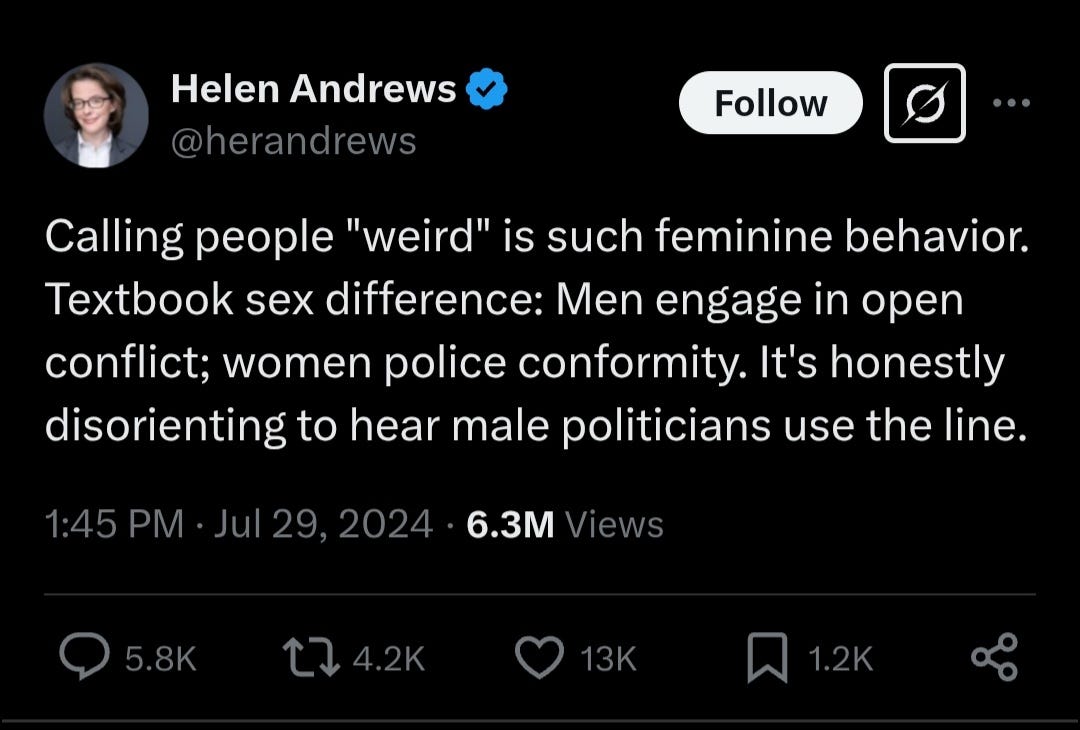
Another consideration that must be emphasized is the degree to which women are consensus driven. This means tolerating, normalizing, or, even worse, condoning various forms of undesirable and even pathological sexual behavior in both men and women fuels this consensus driven groupthink that women in particular are so very susceptible to. A survey of norms and mores in modern society shows a consensus has shifted dramatically in favor of rampant promiscuity and abject profligacy, particularly in young women. In American colleges and universities, fraternities have long ago leveraged an unfair advantage centered around female hypergamy that emphasizes social status, group socializing, and the like. This attribute of American fraternities has existed and indeed proliferated for over a century, as Willard Waller documented this phenomenon in an important and influential essay entitled “The Rating and Dating Complex.” Published in 1937, this essay describes a dating and sexual hierarchy Waller calls the “rating and dating complex,” with select fraternities at the top, “unaffiliated” men at the bottom. Participation in social activities, having a nice car and clothes and a “a copious supply of spending money” are all criteria for this higher status. Fraternities have gamed the system in large part by regularly hosting parties in which sorority women and select unaffiliated women are invited, but not unaffiliated men, with some very limited exceptions. This creates a lop-sided sexual marketplace with a favorable ratio of women to fraternity men, while creating an unfavorable ratio for “unaffiliated” men frozen out of the frat parties. These tactics have continued over the past century, as Jana Matthews has documented.
More cynical readers might wonder what the appeal of fraternity men might be, as that term is often paired with slang terms such as “frat boy asshole” and “frat douchebag.” The key to understanding such questionable sexual selection is social consensus among young women and how women, as a general rule, place an overriding emphasis on group socializing. Fraternities throw parties and indeed have an unnatural monopoly[5] on such parties. This monopoly capitalizes on how women are driven by consensus, socialization, and the like with remarkable efficacy; women, particularly young women, love parties. The sophisticated manipulation of female sensibilities by fraternities at an institutional level is attended by womanizing and the “hook-up culture” that some women complain about at a superficial level, but who by and large go along to get along. Actions and behavior always speak louder than words.
Another disconcerting trend relates to the rise of OnlyFans and other sex webcam services. Although anecdotal, young men using dating applications such as Tinder and the like report it is very common that potential dating and romantic prospects have resorted to performing sexual acts on these platforms, an experience that is reported anecdotally with increasing frequency. Women and particularly college-aged women are resorting to a number of so-called “sugar daddy” websites exchanging “companionship” (i.e., sex) for the generosity of wealthy, usually older men. One notorious article indicates that 56,000 women university students in the United Kingdom resort to some form of sex work. Furthermore, one of the more tiresome but shocking mantras of the left is “sex work is work,” normalizing and even championing the phenomenon whereby large contingents of desirable young women prostitute themselves in any number of ways, whether by “performing” in pornographic material, doing sex acts on OnlyFans or other webcam streaming sites, or acting as de facto escorts on the number of “sugar-daddy” websites.
The hook-up culture gamed at an institutional level by fraternities as well as the proliferation of young women resorting to offering a variety of different sexual services described above creates a terrible, unsustainable imbalance in the sexual marketplace in a multitude of ways. First, unless a young man comes from a wealthy family that affords him “copious amounts of spending money,” a new car, and so on, he will not be able to match desirable women who make thousands of dollars a week prostituting themselves on sex cam sites, being an escort to “sugar-daddies,” and the like. This afflicts the vast majority of young men with an insurmountable disadvantage given female hypergamy. A college-aged woman making a thousand dollars or more a week performing sex acts on webcams is unlikely to be interested in a male peer who more closely conforms to the poor student stereotype of yore. Nor does it matter that high earners on these sites are an exceptional outlier, because OnlyFans, Chaturbate, and the like have set forth a somewhat successful propaganda campaign convincing large numbers of the populace that making large amounts of money is typical, and not an exceptional outlier: perception so often counts much more than reality. In addition to this imbalance in the sexual marketplace where the most alluring White women can make exorbitant sums of money by prostituting themselves in a number of ways, the above-described dilemma facing would-be male suitors is intensified yet further: look among an increasingly fewer number of desirable women who remain virtuous, likely entailing a prolonged state of celibacy, compromise one’s morals and seek sexual comfort because that is all that is left in this degenerate, broken society, or resign one’s self to indefinite, perhaps permanent celibacy.
Unfortunately, the manner in which large contingents of American society condone and endorse this sort of moral dissolution is pervasive, as demonstrated by how most regard the wanton profligacy and womanizing that is rampant in various elite institutions, from Hollywood, to Wall Street, to, worst of all, professional sports. Mainstream American society not only fails to stigmatize or denounce the way elite men at the top, mostly by way of wealth, fame, power, and social status, procure large numbers of the most alluring women for their sexual gratification, this society encourages and celebrates it. Hugh Hefner was celebrated for keeping harems of the most desirable women on the planet—literal Playboy centerfold models—with no mind as to how this normalizes and condones this behavior, or how women, being consensus driven, take cues from the women they perceive, with good reason, to be the most desirable. This has gone on for decades, and is now exhibited in the lecherous behavior of Leonardo DiCaprio and other wealthy, powerful, and famous men who openly flaunt sexual conquest with untold numbers—certainly in the hundreds if not thousands—of the most alluring and desirable women on the planet: the well-known archetype of the beauty queen from rural Wisconsin or Idaho, as well as various countries abroad who comes to Hollywood to try and make it as a model or actress. Some derisively call such sexual fodder “mattresses,” an amalgamation of the two words “model” and “actress.” Far more disconcerting still are certain rightish or right elements on social media that correctly denounce feminism, but actually celebrate the sort of behavior DiCaprio and others have become famous for. Such persons are quick to deride women for “riding the cock carousel,” replete with quips about “empty egg cartons,” but fail to condemn or respond to how men like DiCaprio are part of the problem; such behavior worsens the imbalance of the lop-sided sexual marketplace not just by ruining those young woman he uses for sexual gratification (does anyone think such “damaged goods” are suitable as wives or even girlfriends?), but by setting a perverse social standard precisely because of how consensus driven women are. Such behavior gets even worse with instances such as Bill Belichick, former coach of the New England Patriots, who is 72 and is “dating” Jordan Hudson, some 24-year-old Tussi.

As has been stressed time and again by this author, the sorts of women who degrade themselves by being objectified by men like DiCaprio, Belichick, and others of similar ilk, including most especially Hugh Hefner back in the day, are not outliers, not exceptions, and indeed are hardly capable of individual choice as the term is properly understood, but are part of a larger cultural and sociological trend, a recurring theme in a sick and degenerate culture, to the extent one can call it culture at all. This trend is not resisted in any meaningful way, as most “normy-tier” conservatives simply quip “they are consenting adults, what business is of it anybody else?” Compare and contrast with more reactionary movements of the past that are not so beholden to such moral relativism, but instead act with unwavering conviction and merciless brutality.
These are not, it must be stressed, individual choices in an absolute or even true sense, as naïve assumptions in the Anglo-American tradition suppose, but cultural and sociological trends exhibited on a macro, societal scale and therefore require a remedy at a macro, cultural level. Indeed these destructive trends act in tandem with a certain compounding effect not unlike compound interest or the snowball effect. Reduce these and other harmful sociological and cultural phenomena to the hypothetical dating pool envisioned earlier. Three percent of women deducted for falling to the transgender madness, another unknown contingent for supporting such mad delusion as a “trans ally,” ten to fifteen percent, usually the most desirable white women, belonging to sororities and all the Bacchanalian debauchery that entails. Then another five, ten, fifteen percent who partake in so-called sex-work, again with the numbers weighted to those more attractive who could undertake such endeavors with at least some prospect of “success.” Then of course one must factor in that college educated white women are the only white demographic that leans strongly to the left. Finally, add young white women’s notorious taste in the worst music imaginable for good measure, and that pool of 2500 women is cut down by half or more, a consideration amplified by how less-desirable women are less susceptible to some of these pernicious social trends for obvious reasons.
It must also be stressed that women, at least the most desirable women, wield a disproportionate level of power on and influence of mate selection than do males, and do so in ways that in turn are powerful drivers of male behavior, even though women are largely consensus driven. Women select mates by and large, not so much men; men approach women, asking them out for a date or for number, women choose to accept or decline. Particularly in the context of young men brimming with testosterone, this means women’s terrible predilections do in turn influence male behavior in incredibly powerful ways. The desire, the drive, to attract the most alluring young women is central to the life force and biological imperative, and that is no truer than for young men during adolescence and young adulthood when testosterone flows. It is the primary motive for teenage boys to try out for and compete in football and other varsity sports. Those more artistically inclined will learn to play guitar or write poetry for many of the same motivations, but vying interest not from the cheerleader sort, but the artsy girls in drama club and the like. Since time immemorial, young men have engaged in all sorts of dangerous and even stupid behavior, often resulting in injury or death, for no other reason than to impress the most desirable women, as men have perpetrated horrific violence on another because of women since Helen of Troy and before. In modern times, men have regularly resorted to fisticuffs, engaged in fool-hardy, life endangering stunts like drag-racing and other such ventures, all to compete in the sexual marketplace. The implications of this cannot be overstated: social contagion and consensus driven maladies women succumb to in turn influence the behavior of young men doing whatever is necessary to compete in the sexual marketplace.
And there are even more dire implications. The failure to discern and remedy how these cultural and sociological trends disrupt and destabilize the sexual marketplace invoke what is known as the bare branch theory regarding the destabilization of society that occurs when excess numbers of men are disadvantaged or precluded altogether from competing in the sexual marketplace. As set forth in Bare Branches: The Security Implications of Asia’s Surplus Male Population, this theory posits many destabilizing effects, including much higher competition between men in the sexual marketplace, and all the conflict and anti-social behavior that entails. These dysfunctional trends further exacerbate the demographic winter that presents an existential threat to European peoples everywhere.
There are of course other harmful social trends that are ruining sizeable contingents of young women, including most particularly the manner in which mainstream, controlled media propagate and promote race-mixing. One article by the Pew Research Center indicates 11 percent of whites, including ten percent of white women, are in interracial couples. That statistic obviously pertains to marriage, not dating or copulation, so the number of whites subject to the propagation of miscegenation is likely somewhat higher. Some on the dissident right regard this as a good sign, that whites are largely impervious to this propaganda. Ten percent however is quite a lot, particularly if that ten percent is extrapolated on a generational timeline, increasing as miscegenation is promoted with ever increasing intensity. It is also of note that a certain type of white woman who “pays the toll” is such a reproducible cultural phenomenon that right-wing and far right accounts on twitter and other platforms regularly disseminate thousands of images and memes featuring white women who all sort of look the same, and either complain about the hardships of being a poverty-stricken single mother with a (usually quite ugly) miscegenated child or have been subject to black on white violence in the way of battery at best, death at worst.
These and other trends not mentioned, acting in tandem, have largely removed sexual and romantic norms and mores away from any balance or equilibrium in the sexual marketplace, just as these trends have caused most people to marry later and others not to marry at all. In this way, the promulgation of these trends is revealed to be the nexus from which the demographic winter emanates, as that demographic implosion threatens Europe and the West with racial suicide and civilizational ruin. These trends have lured a critical mass of white women away from their male counterparts in a variety of ways, so much so that it is no longer standard for young people to enjoy serious courtship late in high school and early in college. In generations past, college men often married before graduating or very soon thereafter. This represents a matrimonial union in which young people invest in each other as they seek their fortunes. Women would invest in men before they achieved status and success, and men garnered strength and support from the love, intimacy, and companionship husband and wife enjoyed together. Now a sizeable portion of the most alluring white women are going for “sugar-daddies,” or slutting it out at frat parties, contributing to the cam girl menace, so on and so forth. Women have never been unhappier, as many regret not marrying, foregoing or hampering the opportunity to have children. Men, instead of gaining the strength that comes from matrimonial love and companionship, are thrust into an increasingly sordid sexual marketplace out of balance and characterized increasingly by intense competition between males, with all of the disorder, dysfunction, and chaos predicted in the book Bare Branches.
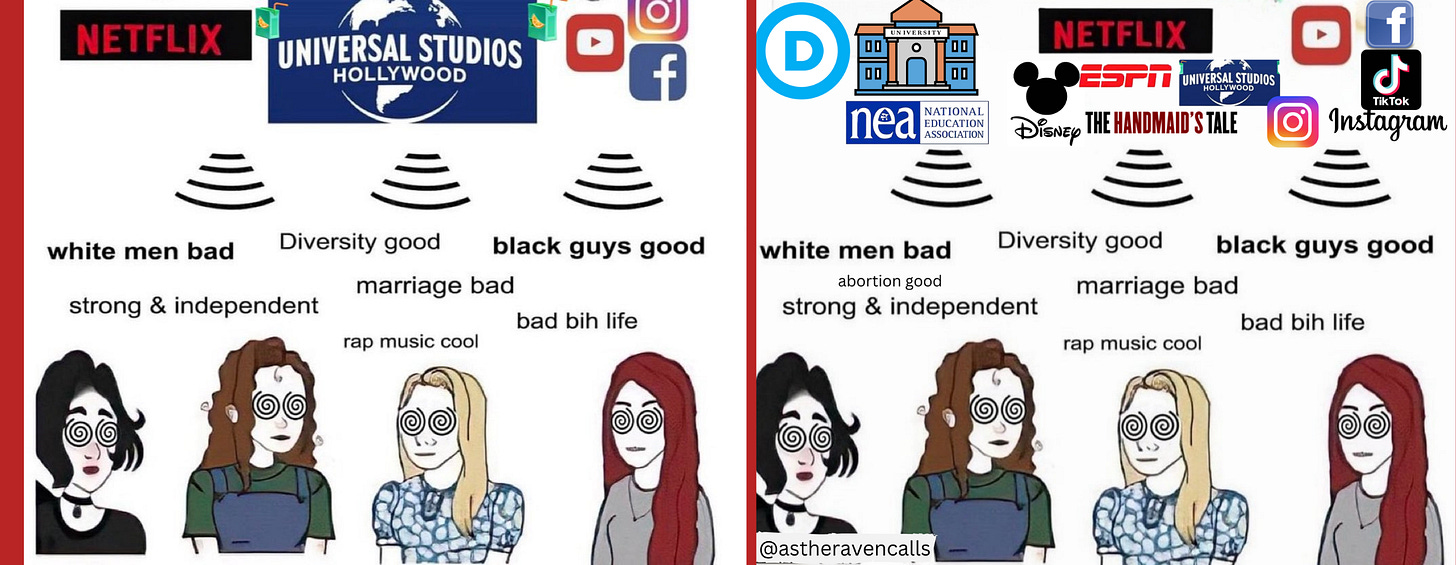
Before and after: on the left an insightful meme illustrating precisely how disconcerting cultural trends are disseminated by powerful interests. On the right, improvements made by this author.
These and of course many other considerations demonstrate once again how woefully inadequate and impotent mainstream conservatism is, ridden with the propensity to do nothing other than mouth tiresome yarns such as “if they are consenting adults…,” or even that culture does not matter, that family and religion alone can solve these and other problems, even though family and religion are, quite obviously, expressions of culture themselves. Dispelling such naïve notions about “individual choice” is essential—particularly in the female sex—as these phenomena and their effect on the sexual marketplace demonstrate yet again that no man is an island, that we are all affected by what others do, particularly as the “choices” individuals supposedly make are profoundly influenced if not outright determined by what others do, particularly in relation to the consensus driven nature of women. As argued at the end of “Culture as Programming” and as readily evinced in the meme image featured above, attacking, neutralizing, and even destroying those subversive elements in the culture that drive these nefarious, destructive trends in society is the hidden key to restoring balance to the sexual marketplace and instilling harmony between the sexes so that men and women can be together again on a near universal scale, as had existed for centuries before the advent of the modern world and its many peculiar, dysfunctional properties. Disrupt, debilitate, and destroy those institutions and interests that create and disseminate the programming that drives these cultural trends, and the mesmerizing chains of indoctrination that are ruining white women and driving Europe and the West to oblivion will be broken.

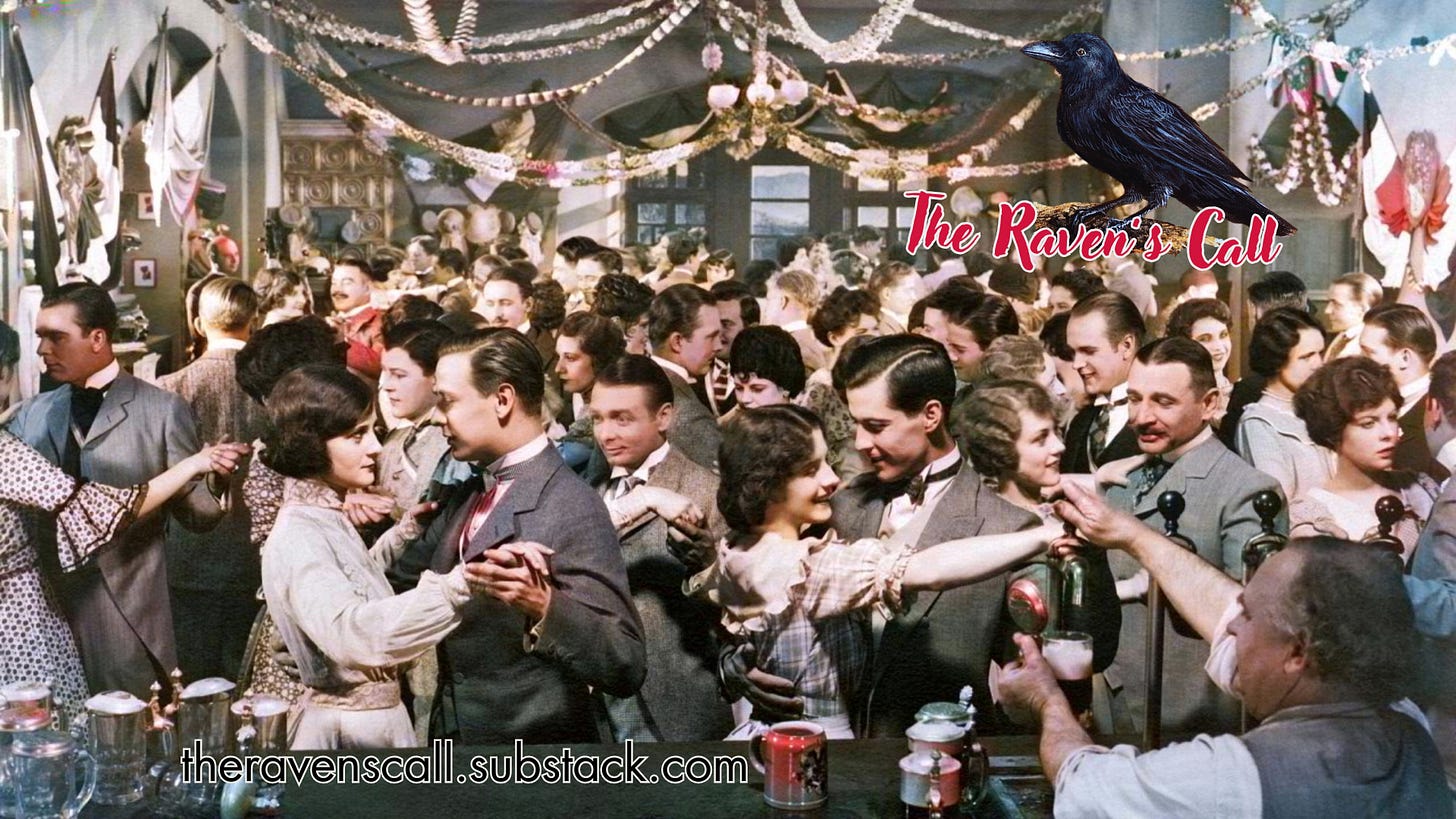 At the broadest, most abstract level, when young women in a society succumb to undesirable social trends, and, as the greater evisceration of morals and values that are the foundation for any enduring civilization continues to progress ever further, such developments have a number of deleterious effects on society at large. One of which, the focus of this essay, is how these phenomena contaminate, constrict, and otherwise create tremendous imbalance in the pool of suitable female companions that their male counterparts have available to them in the dating and courtship game, otherwise known as the sexual marketplace. In accordance with basic laws of supply and demand, that reduction in sheer numbers of suitable romantic prospects in the sexual marketplace (i.e., the supply) translates into an increased cost most men will incur in successfully finding a suitable companion and developing a long-term romantic and sexual relationship that, hopefully, will result in marriage and lifelong love and companionship. And children. “Higher cost,” for lack of a better term, signifies the increased competition that occurs between males when there is a smaller pool of suitable female counterparts, as well as the extra time, effort, and money expended in finding a companion in a dating pool characterized by diminished supply and increased competition among male peers. That “higher cost” is expressed in many different ways, including greater time and effort invested in social gatherings to find a female companion, lesser odds and more time frequenting coffee shops and other venues that present the possibility of a chance encounter, fewer suitable women on dating applications with more men vying for their attention, and so on.
At the broadest, most abstract level, when young women in a society succumb to undesirable social trends, and, as the greater evisceration of morals and values that are the foundation for any enduring civilization continues to progress ever further, such developments have a number of deleterious effects on society at large. One of which, the focus of this essay, is how these phenomena contaminate, constrict, and otherwise create tremendous imbalance in the pool of suitable female companions that their male counterparts have available to them in the dating and courtship game, otherwise known as the sexual marketplace. In accordance with basic laws of supply and demand, that reduction in sheer numbers of suitable romantic prospects in the sexual marketplace (i.e., the supply) translates into an increased cost most men will incur in successfully finding a suitable companion and developing a long-term romantic and sexual relationship that, hopefully, will result in marriage and lifelong love and companionship. And children. “Higher cost,” for lack of a better term, signifies the increased competition that occurs between males when there is a smaller pool of suitable female counterparts, as well as the extra time, effort, and money expended in finding a companion in a dating pool characterized by diminished supply and increased competition among male peers. That “higher cost” is expressed in many different ways, including greater time and effort invested in social gatherings to find a female companion, lesser odds and more time frequenting coffee shops and other venues that present the possibility of a chance encounter, fewer suitable women on dating applications with more men vying for their attention, and so on.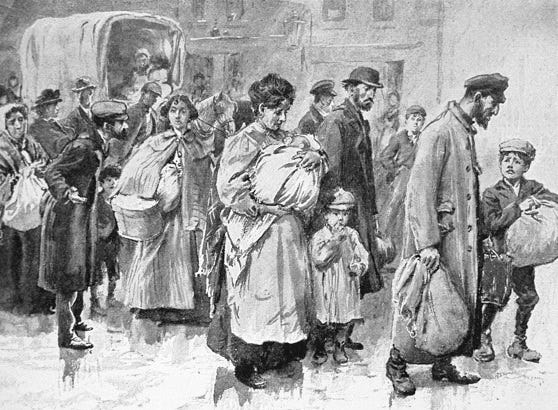
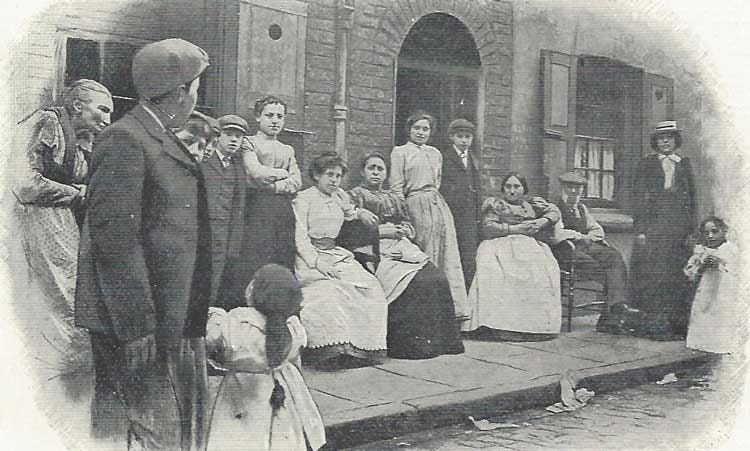
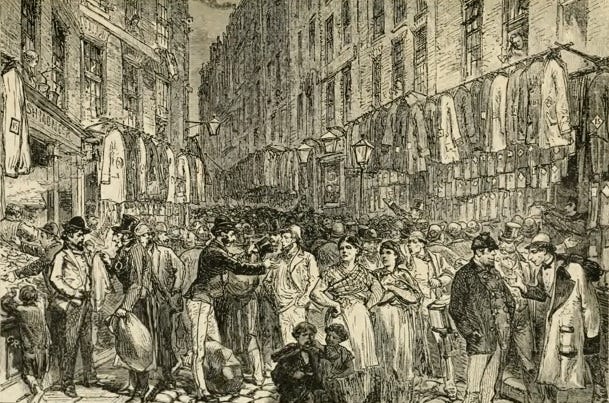
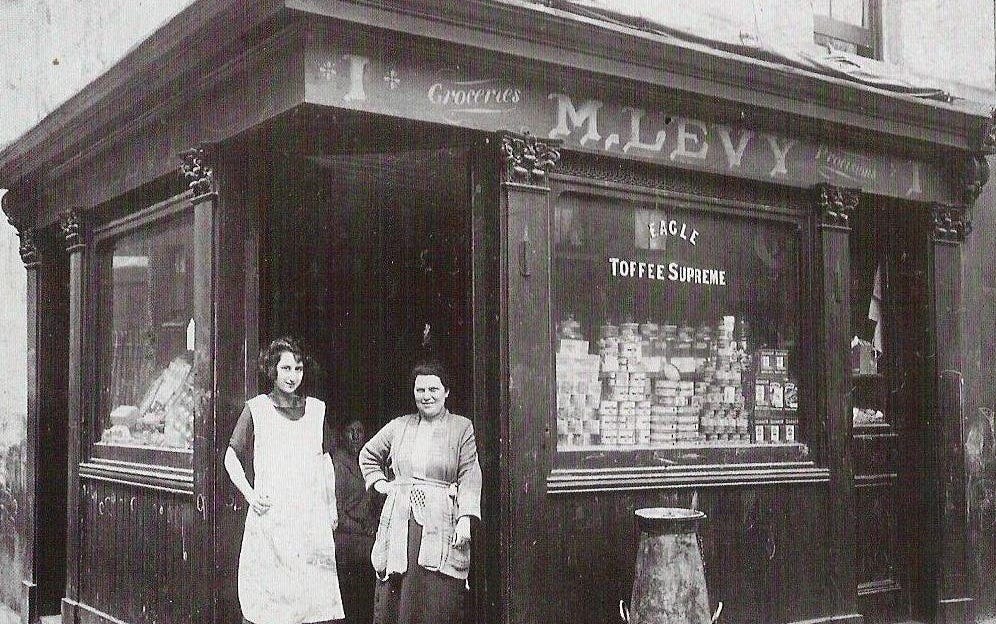
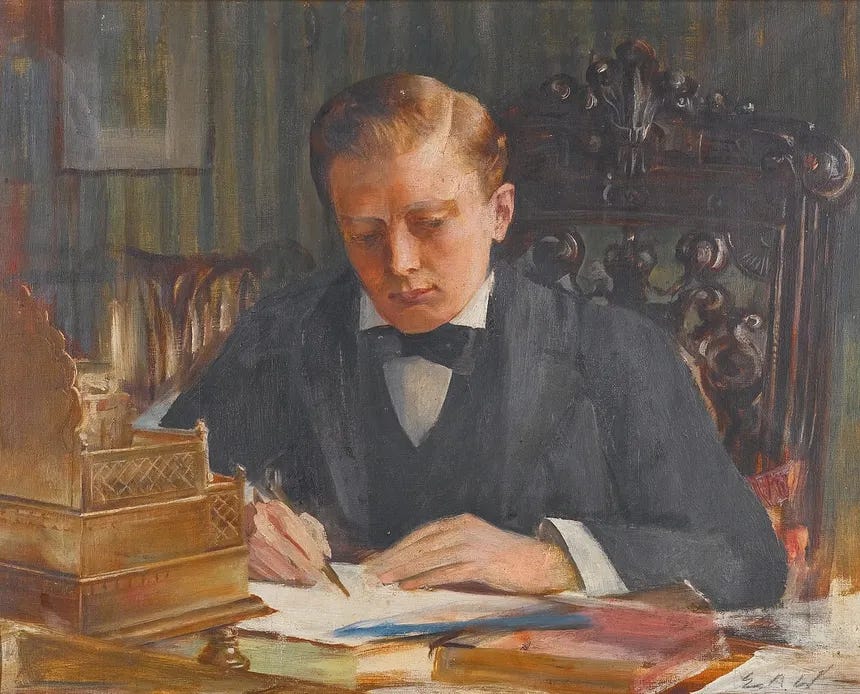
 A clown called Chleo: the entirely and obviously male pervert “Chleo Sunter,” a.k.a. John Leslie Graham
A clown called Chleo: the entirely and obviously male pervert “Chleo Sunter,” a.k.a. John Leslie Graham A cutie called Cleo: the attractive actress Amanda Barrie
A cutie called Cleo: the attractive actress Amanda Barrie  Hero of Clown World #1: one of the perverted and narcissistic “transwomen” who threaten real women with rape, mutilation and murder
Hero of Clown World #1: one of the perverted and narcissistic “transwomen” who threaten real women with rape, mutilation and murder Hero of Clown World #2: a leftist male who wants to see “all Republican women” “gang-raped on national television” (
Hero of Clown World #2: a leftist male who wants to see “all Republican women” “gang-raped on national television” (




